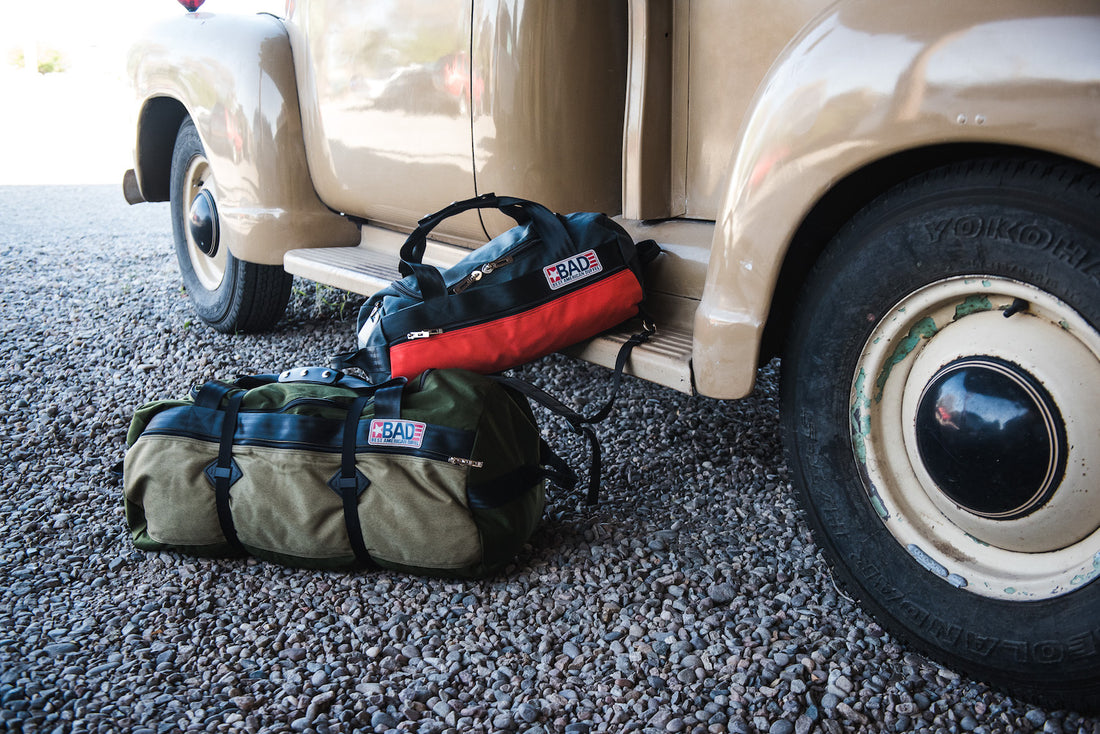
The Devil's In the Details
Share
"How can we make a piece of luggage that’s really pretty simple, and keep it that way, but also make it better in every way—quality, durability, functionality?" Malcolm Vetterlein, co-founder of BAD BAGS said of the company's guiding principles in the early days. "That’s what the premise was. Those were the keys we focused on. It’s still that way."
BAD has been making their legendary duffels with the same made-in-America, quality construction for nearly 30 years. Their top-shelf material and construction process continues to prove itself, with many customers still happy with their BAD BAGS after decades of use.
Here, we'll take a look at the details of a BAD duffel bag and what makes a simple concept great.
The body of all BAD BAGS are made from 1,000 denier Cordura Classic. This nylon-based fabric is extremely abrasion resistant and used in everything from motorcycle jackets to footwear to luggage to extensive military applications, where it has been a go-to for 45 years. The air-textured nylon weave is highly water repellent and tear resistant while still being light and packable. This fabric is perfect for the most intense uses: exactly what was needed.
A zipper can be the weakest point on a bag and is often the first place to break. Vetterlein wanted to forego the standard straight-zip opening, though, and instead opt for a clam-shell zipper that would allow easy packing and unpacking because of the wide opening—and also reduce the stress on the zipper from tension. There was really only one name they had to look at: YKK. YKK is the standard setter in the zipper world and their #10 coil zipper offered smooth action and extreme strength, even when the bag is over stuffed. The zipper's beefy sliders (pulls) are easy to handle (even when wearing gloves) and overlap for locking. The action between the coils and the zipper pull can only be described as buttery and is still one of the most pleasing features on the bag.
When he went looking for straps for the bags, Vetterlein was kind of stumped. There was not a lot of extremely durable, wide webbing out there at the time and what little there was wasn't aesthetically pleasing, he said. He found not only inspiration from the seat belt in his car but also just what he needed. Seat belts are made to withstand 6,000 pounds of force before breaking—more than enough for a good duffel. They're super tough and durable; plus, they look good. Problem solved.
The seams that join the duffel pieces together are stitched once and then reinforced over the top with a piece of binding tape to cover the raw edges and increase strength. The handles are cross- and box-stitched to increase strength in high-tension areas, and the hardware on the bags are all nickel-plated stainless steel to withstand huge loads and never rust. The bags are all constructed in the Seattle by a highly skilled team with an eye for quality.
"We wanted to make a bag that would work for the most extreme uses," Vetterlein said. "Most people probably won't need that in their day-to-day travels but over-built is better than under-built. In today's throw-away society, making products that will last a lifetime is good for the consumer and the environment."
Finally, all is lost if not for good customer service.
"For me, it was a no-brainer," Vetterlein said of providing personalized service to BAD BAGS customers.
He and his wife, Lisa, respond to all customer inquiries. Those resources also include a lifetime manufacturing guarantee and repairs.
"We're not trying to fake anything," Vetterlein says. "We just make our duffels the way most people would want it done."
If what you want is an extremely durable, good-looking bag that will last for years and is backed up by a family-run company right here in the USA, look no further than BAD BAGS.